Heligan, South Cornwall. 48 hours here!
- Anne B 10milesfrom

- May 13, 2021
- 4 min read

Where to stay? Every time we travel to the Isles of Scilly from Penzance, we try to have a few nights before and afterwards in our campervan to explore Cornwall. This year we chose a 2 night stay at Heligan Caravan and Camping Park, swayed by the fact that it is a 5 minute walk from the site into the Lost Gardens of Heligan, which we wanted to return to. We last came on our honeymoon and so much restoration work has happened since then! The site also offers a 20% discount on garden tickets for campers.

We knew facilities on the campsite would be closed due to Covid regulations, but the amenities block looked really impressive, and the site was exceptionally well looked after, with very friendly wardens and great views. The hardstanding pitches were excellent, but quite a lot of the grass ones were sloping, so we were glad we had opted for a solid base.
Top tips and secret spots!
The Lost Gardens of Heligan are spectacular, especially in May when we visited. It is bright colour time.
These flowers are not shy and retiring, and I love them. Azaleas and Rhododendrons are in full bloom, as well as swathes of bluebells in the woods, and many other spring flowers.
We loved the restored kitchen gardens, with their enormous Victorian glass houses, pineapple pit and melon houses! The glass panes overlap with curved edges, an ingenious design which prevents leaking. We then did the long walk to the Jungle and woodland walks, which was really worth the effort.
There are memorial tablets at various places to commemorate gardeners here who died in World War One, after which, the gardens fell into decline. John Nelson was the gardener credited with driving the ridiculously ambitious plans for the garden restoration forward, and his plaque certainly gives a sense of his character! Do visit these gardens!
Carne Beach. We chose to avoid Mevagissy this trip, and instead drove to a less well known spot, which has a good sized car park which was nearly empty.
The beach and cliffs are a geologists dream, with interesting rock strata, fossils and a wave cut platform at low tide. From here there is a super walk up to Nare Head, which can be a 4 mile out and back, or a 6 mile circular via Veryan, as described on the National Trust website.
The path was lined with flowers of all kinds. Bluebells, Campion, Gorse, daisies and many more. We sat at the top of Nare Head looking down at Gull Rock. More of that later. The path also passes a ruined cottage which belonged to Mr Mallet in the early 1800’s. Apparently he was a married fisherman who kept his boat in the inlet far below, and left his wife living in the village, while he stayed in the cottage all week, just returning with his catch at weekends. Absence obviously didn’t make the heart grow fonder as in 1840 he emigrated to Australia without her!
On the headland are bunkers, some of which were used in WW2 as part of a decoy mock up of Falmouth docks to fool the German Night Bombers. Another is a ventilation shaft to a Cold War bunker.
Veryan This little village is worth a visit. Firstly you will notice some unusual buildings. Small, round houses with a cross on top. There are 5 in all, and they were built by Reverend Jeremiah Trist in the early Nineteenth century, one for each of his 5 daughters. The round shape was so that there were no corners for the Devil to hide in.

In a far corner of the surprisingly large churchyard, and near 2 of the round houses, is the longest grave in England, 98 feet long. Sadly it was for 19 German sailors who perished when their ship hit Gull Rock in a storm in February 1914. Fifteen are buried here head to toe. It is said that over 400 people attended their funeral, which was before World War I started. I wonder if the response would have been the same a few months later?
Charlestown harbour is a quaint place to visit, near St Austell, a fascinating example of a restored Georgian seaport with stone fishermans cottages, and often a tall ship or two. Popular with film directors, it recently featured in Poldark.
Our final excursion was to Lanhydrock Gardens, also National Trust, so we are getting good value from our membership, especially as many of the coastal carparks here are also free to NT members. Covid restrictions meant that the impressive 19th century house was closed, but the gardens more than made up for it. There are formal gardens in front of the house, but the real glory is the landscaped gardens on the hill behind it. Again the azaleas and rhododendrons provided huge bursts of colour on what was a rather grey day.
We also took one of the long circular walks down through the woods to the River Fowey, then followed the river past Respryn bridge, before climbing back up to the house. The beech trees were in full early spring green finery, and beneath them the bluebells were a constant blue haze. The river bubbles along, and we even saw a dipper, one of my favourite birds. What a super day.
A great few days, and now we move on! (No eating inside pubs or cafes due to Covid, so lots of in van cooking! No complaints so far from Chris, but I am really looking forward to a few meals out, although it has been a bit chilly and damp to chance a meal outside.)
Heligan is at the eastern end of the Roseland Peninsula, which stretches to St Mawes in the west, and this is a super, less well known corner of Cornwall to explore. Enjoy!












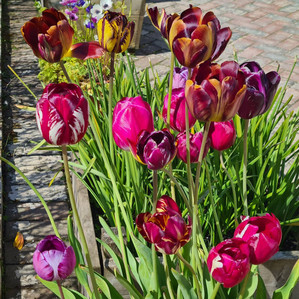



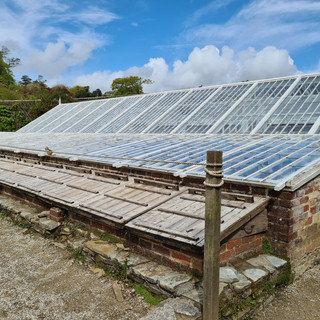





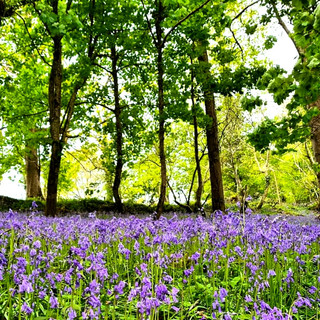



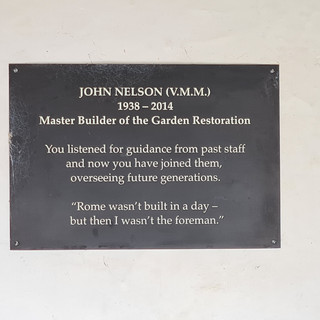

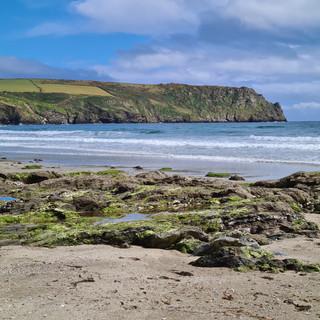









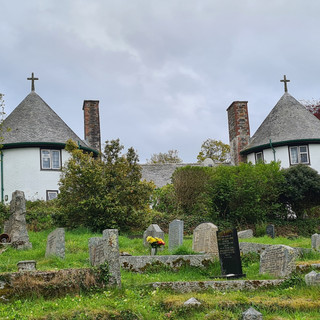












Comments